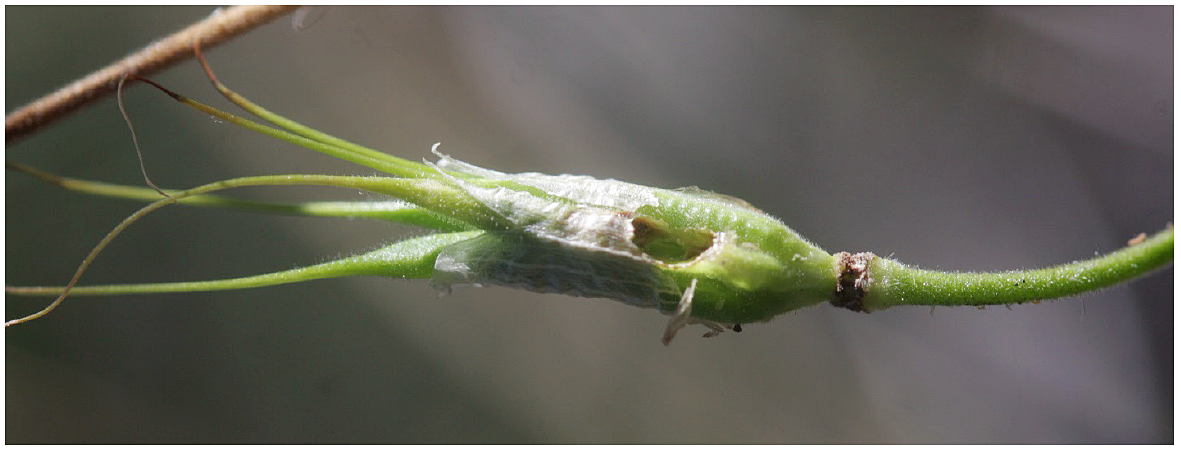
Ecological Archives E096-250-A3
E. F. LoPresti, I. S. Pearse, and G. K. Charles. 2015. The siren song of a sticky plant: Columbines provision mutualist arthropods by attracting and killing passerby insects. Ecology 96:2862–2869. http://dx.doi.org/10.1890/15-0342.1
Appendix C. Seed set in experimental plants.
We began this experiment in July, after all plants had flower buds (50/50), most had flowers (28/50) and several had developing fruit (8/50); furthermore, the caterpillars of the first generation of Heliothis phloxiphaga were large by this point, larger than either of the most common predators (Tupiocoris and Hoplinus). Therefore, no treatment effect was expected, nor observed in the early season. The strong late season treatment effect (Fig. 2) did not translate into fruit set; the columbines dried up early on account of the normally-year-round seep drying up nearly completely in the drought summer of 2014. However, the seed data collected is still worth examining, as we collected any ripe fruit at each predator and damage check.
Results
We collected the first fruit on 6 Aug 2015, these had been either flowers or fruit at the time of treatment initiaion, therefore, we excluded these from analyses. Control plants averaged 27% higher seeds per fruit than carrion removal plants, a significant result (control 90.8 + 5.6, carrion removal 71.7 + 5.3; two-tailed t test, p = 0.02). Total seed set per plant did not differ significantly between treatments (control 718.8 + 87.7; carrion removal 638.9 + 118.3; two-tailed t test, p = 0.59), even correcting for differences in plant size (seeds per cm of peduncle and pedicel: control 2.6 + 0.3, carrion removal 2.1 + 0.2, two-tailed t test, p = 0.16). Total number of fruit did not differ significantly between treatments (control 7.6 + 0.82, carrion removal 8.4 + 1.3; two-tailed t test, p = 0.59) though seeds per ripe fruit varied enormously (from 4 to 242).
Interpretation
Seed data in a drought year in a long-lived perennial plant may be an imperfect proxy for fitness. Nonetheless, the finding that control plants had higher seeds per fruit is consistent with the damage observed, as caterpillars often ate reproductive parts incompletely and one or few of the follicles would still bear seeds (Fig. C1). As fruit took so long to ripen, the majority of fruit in August, when the difference in damage was most pronounced, were aborted when plants dried up. For these reasons, we believe the differences in damage to reproductive structures observed are a better metric of the utility of the scavenging bodyguards in this experiment than the seed set, in this atypical season.
Fig. C1. A damaged fruit which will still set some seet. Only one follicle (of the usual 5) was likely consumed. In most cases, even with a small entry hole, the caterpillar consumed every developing embryo in the damaged follicle and occasionally in adjacent follicles as well. This fruit would have been scored as damaged in the weekly tabulations, but also collected for seed when ripe, and would have had an incomplete complement. Photo: EFL.